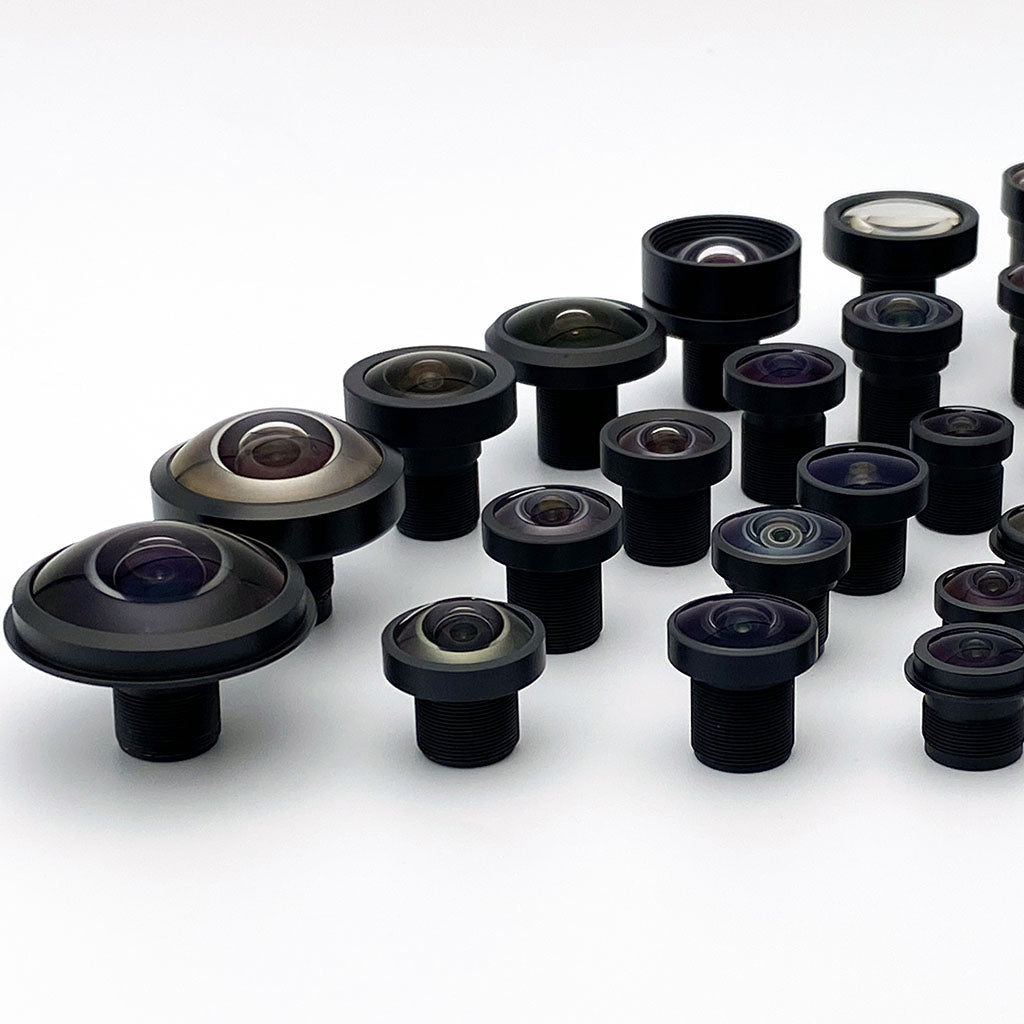Fisheye Lens and Wide Angle Lens Distortion
Wide Angle Lenses and Fisheye Lenses: An Introduction
Distortion is the change in magnification and angular resolution as a function of field angle in an image.
Optical Distortion, Wide Angle, and Fisheye are used when discussing lenses that provide a large field of view.
What is Wide Angle? What is Fisheye? Is there really a Difference?
Yes, there is a difference between a fisheye and a wide-angle lens. A definition from the Smith's Modern Optical Engineering, Fourth Edition, page 718, is:
Fisheye: A lens with a field of view of 180° or more.
Therefore, a Fisheye Lens can be a Wide Angle Lens when an image sensor smaller than the image circle is used. A Wide Angle Lens is not necessarily a Fisheye Lens.
GoPro's marketing team was stuck with "Fisheye" because the first product used a cropped Fisheye lens. The newer GoPros use Wide Angle lenses which are not Fisheye lenses.
So How Can a Fisheye Lens Be Wide Angle? But Not Vis-Versa?
Fisheye Lenses with 180°+ Field of View do not always provide 180° FoV if used with a smaller sensor.
For example, a Fisheye with Full Coverage can provide much smaller fields of view such as 160° Diagonal, where they act as a "Wide Angle" Lens.
The reason for this is the "Fisheye Fill Factor" which has six different general categories.

Barrel Distortion as a Third Order Optical Aberration
Optical distortion is a third order transverse aberration. The simple explanation is that distortion is the change in magnification (angular resolution) versus image height.
Distortion is present in all fisheye lenses and most wide-angle lenses.
Additionally, distortion is a function of field angle, and usually increases as field increases.
Rule of Thumb 1: A lens with greater distortion has greater field of view than another lens which has the same Effective Focal Length.
Rule of Thumb 2: The smaller the field of view, the less apparent optical distortion is.
The distortion profile of a lens dramatically changes the field of view output from a camera system. In the below charts you can see that a 1.9mm lens can provide anywhere from 106° Field of View to 180°+ Field of View at 5.0mm image circle.


What is the Difference Between Perspective Distortion and Optical Distortion?
Optical distortion is a third order transverse aberration. The simple explanation is that distortion is the change in magnification (angular resolution) versus image height.
Distortion is present in all fisheye lenses and most wide-angle lenses.
Rule of Thumb 1: A lens with greater distortion has greater field of view than another lens which has the same Effective Focal Length.
Rule of Thumb 2: The smaller the field of view, the less apparent optical distortion is.
Why does Distortion Matter to Computer Vision?
Distortion changes the scale of objects at different parts of the field of view. Additionally, the scale changes both radially and tangentially, causing object deformation.
CNN-based methods should ideally be trained on data that has the distortion profile used by your embedded vision system. Otherwise, activations will occur in incorrect locations.

Pei, et. al. "Effects of Image Degradations to CNN-based Image Classification"
Distortion changes the scale radially and tangentially, causing line deformation.

Pei, et. al. "Effects of Image Degradations to CNN-based Image Classification"
Li, et.al. 2020, “ULSD: Unified Line Segment Detection across Pinhole, Fisheye, and Spherical Cameras”
What's Your Application? Our Lenses Cover the Spectrum.
Factory Machine Vision?
Our cost-effective compact C-Mount lenses are designed for up to 1.1"~1.2" format global shutter sensors.
Intelligent Everywhere?
Our low distortion lenses with multiple F# can be used to optimize your depth of field.
Surveillance?
Our fisheye and IR Corrected lenses are suitable for doorbell cameras and active IR illuminated scenes.
Exposed to the Elements?
Our IP67 and IP69K lenses are suitable for applications exposed to the environment.

